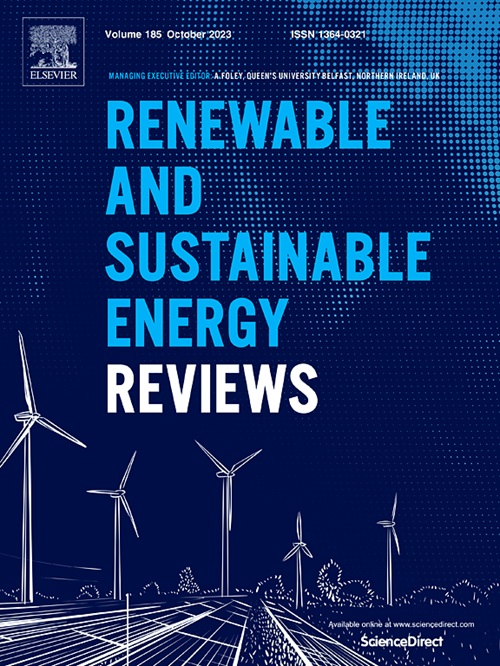用于可持续建筑的可回收材料3D打印:综合经济和生命周期评估
IF 16.3
1区 工程技术
Q1 ENERGY & FUELS
引用次数: 0
摘要
由于建筑行业对生态系统、自然资源和人类健康的重大影响,对可持续材料和技术的需求已经上升。因此,本研究旨在探讨建筑3D打印(3DP)过程中回收材料的可持续性潜力。砂浆混合物的设计使用回收粘合剂材料(粉煤灰和高炉炉渣)和骨料材料(废弃混凝土基再生细骨料(RFA))用于3D打印过程。通过打开时间、坍落度和铺展直径来评价不同地聚合物混合物在印刷过程中的充分性。结果表明,含有RFA的地聚合物混合物为3D打印过程提供了足够的新鲜性能和更高的尺寸稳定性。在3D打印中,基于rfa的地聚合物的压缩测试(以及不同的测试方向)也产生了比天然细骨料(NFA)更好的强度。除了实验室规模的实验外,还考虑了3D打印和铸造墙壁的案例研究(使用基于NFA和RFA的地聚合物混合物),以进行全面的经济和生命周期分析(LCA)。结果表明,采用RFA技术的3D打印墙体对生态系统、自然资源和人类健康的负担较低;此外,含有RFA的3D打印墙体的成本最低。浇铸墙的整体环境和经济影响较高主要是由于胶合板模板的使用。敏感性分析表明,根据施工的复杂程度,重复使用模板多达10次可以潜在地减少经济和生态负担,但传统施工的总体负担仍然高于3D打印。随着3D打印技术的成熟和规模经济的实现,3D打印有望进一步降低成本和环境影响。本文章由计算机程序翻译,如有差异,请以英文原文为准。
3D printing of recycled materials for sustainable construction: A comprehensive economic and life cycle assessment
The demand for sustainable materials and technologies has risen due to the construction sector's substantial impact on the ecosystem, natural resources and human health. Therefore, this study aims to investigate the sustainability potential of recycled materials for the construction 3D printing (3DP) process. Mortar mixtures are designed using recycled binder materials (fly ash and blast furnace slag) and aggregate materials (waste concrete-based recycled fine aggregate (RFA)) for the 3D printing process. The adequacy of different geopolymer mixtures for the printing process is assessed through the open time, slump and spread diameter. The results showed that geopolymer mixtures containing RFA offered adequate fresh properties and more dimensional stability for the 3D printing process. The compression testing of the RFA-based geopolymers (along with different testing orientations) also yields better strength than the natural fine aggregate (NFA) in 3D printing. Apart from lab-scale experimentation, a case study of 3D printed and casted walls (using NFA and RFA based geopolymer mixtures) has been considered for comprehensive economic and life cycle analysis (LCA). The results showed that the 3D printed wall using RFA offered a lower burden on the ecosystem, natural resources, and human health; moreover, the lowest cost was observed in the case of the 3D printed wall containing RFA. The higher overall environmental and economic impact of casted wall was primarily due to the usage of plywood formwork. Sensitivity analysis showed that reusing formwork up to 10 times can potentially reduce economic and ecological burdens, depending on construction complexity, but still, traditional construction's overall burden remains higher than 3D printing. As 3D printing technology matures and economies of scale are realized, 3D printing is expected to reduce costs and environmental impacts further.
求助全文
通过发布文献求助,成功后即可免费获取论文全文。
去求助
来源期刊

Renewable and Sustainable Energy Reviews
工程技术-能源与燃料
CiteScore
31.20
自引率
5.70%
发文量
1055
审稿时长
62 days
期刊介绍:
The mission of Renewable and Sustainable Energy Reviews is to disseminate the most compelling and pertinent critical insights in renewable and sustainable energy, fostering collaboration among the research community, private sector, and policy and decision makers. The journal aims to exchange challenges, solutions, innovative concepts, and technologies, contributing to sustainable development, the transition to a low-carbon future, and the attainment of emissions targets outlined by the United Nations Framework Convention on Climate Change.
Renewable and Sustainable Energy Reviews publishes a diverse range of content, including review papers, original research, case studies, and analyses of new technologies, all featuring a substantial review component such as critique, comparison, or analysis. Introducing a distinctive paper type, Expert Insights, the journal presents commissioned mini-reviews authored by field leaders, addressing topics of significant interest. Case studies undergo consideration only if they showcase the work's applicability to other regions or contribute valuable insights to the broader field of renewable and sustainable energy. Notably, a bibliographic or literature review lacking critical analysis is deemed unsuitable for publication.
 求助内容:
求助内容: 应助结果提醒方式:
应助结果提醒方式:


